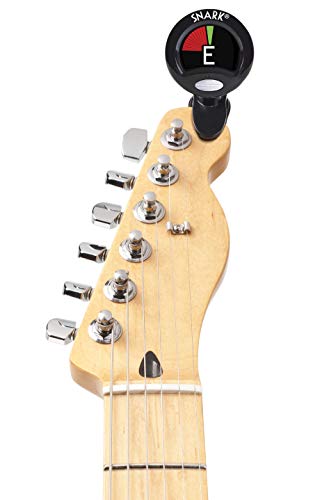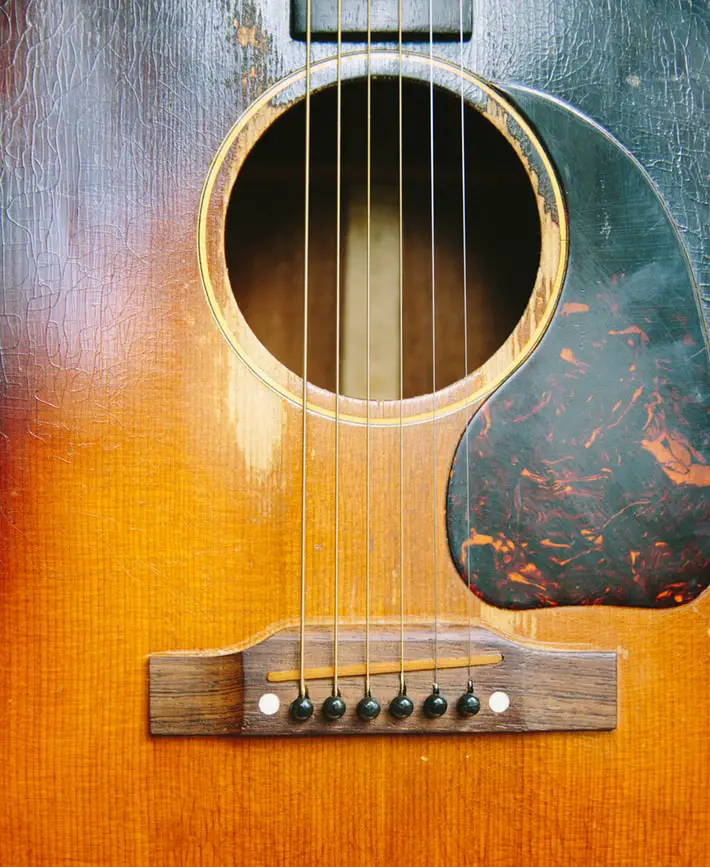There is something about guitar strings. They have to be changed at some point regardless of the price and quality. Guitar strings are constructed to stay intact for a long time but changing them at some point remains inevitable.
Can guitar strings go bad?
Guitar strings can go bad. This is because of the physical and chemical components used to make them. Whether your guitar comprises of steel or nylon strings, they are bound to lose some or all of their quality at some point. However, the duration is one way to tell good strings from average or bad ones. Good strings will take a while before requiring that you change them.
The look and feel of bad strings on the fretboard can be discouraging. Playing on such a guitar is a turnoff for any guitarist, as it negatively affects the sound output.
Other than the loss of quality, the strings can become slack, rust, get damaged, or just break. When any of this happens, changing your strings becomes a necessity.
What factors determine how long your guitar strings can be used?
The factors that determine how long guitar strings can be used include the following:
1) Product Quality.
2) Practice Time.
3) Atmospheric Condition.
4) Maintenance.
The duration of the guitar strings depends on the quality of the product. Uncoated strings will not stay as long as coated strings. Also, because of the different components used to make steel and nylon strings, they have different durations.
The number of hours spent playing the guitar determines how long the strings will remain intact. When people play the guitar, the oily extracts from their hands affect the strings. This causes corrosion, making the strings lose their durability and sound output. As a result, strings that are rarely played will stay much longer than the strings that are often played.
Especially for acoustic guitars, the weather condition affects the strings. If the guitar is exposed to very humid environments, the strings will have a short timeframe.
Guitar strings that are well cleaned are going to stay much longer. This is because the oily residue from frequent practice will be taken off. As a result, your guitar strings will not lose their color and quality.
If and when you need to change the guitar strings, knowing the cost is important. On this note, let us answer the question of “how much does it cost to restring a guitar?”

What are your options for restringing your guitar?
You have 2 options for restringing your guitar. You can either have a professional do it for you, or do it yourself. If you get a professional to restring the guitar, it will cost you more. However, you enjoy other privileges such as hardware conditioning, guitar cleaning, fixing corrosion, bridge adjustment, and tuning. For a service that comes for $30 – $60, this is a fair bargain. On the other hand, if you choose to do it yourself, you get to save a lot.
Should you restring yourself or have a professional restring your guitar?
If you are on a low budget, you will be better of restringing yourself. This way, you get to save a lot. The most essential things you would need is a new set of strings and a tuner. You can work your way around the string cutter and any other item. However, if you are short on time and experience, you can have a professional restring the guitar for you.
Also, if you need the extra services that come with restringing from a professional, do not restring yourself. We strongly advise that you have a professional restring your guitar once every 6 – 9 months.
Where can you restring your guitar?
There are various guitar restringing services near you. Many guitar hardware stores offer this extensive service. You can walk up to the nearest guitar store and make inquiries. Also, make sure they offer the entire package of hardware conditioning, guitar cleaning, fixing corrosion, bridge adjustment, and tuning. If you must pay someone for changing your guitar strings, you better make the most of it.
If that is too expensive, then restringing the guitar yourself is your best bet. If you have the time and you know what you’re doing, it is a lot more affordable.
Check out these other in-depth articles/reviews…
- Yamaha FG800 vs FG830 – Detailed Comparison
- Yamaha FG800 vs FS800 – Detailed Comparison
- When Was The Guitar Invented?
- What Notes Are The Guitar Strings? — Detailed Answer
- What Is A Guitar Scale? — Fully Explained
- How To Become A Guitar Teacher — Key Steps To Becoming The Best In Your City
Table of Contents
What are the Things You Will Need for Restringing?
You will need 3 major items to restring your guitar.
1) A new set of guitar strings.
2) A guitar tuner
3) A String Cutter
When getting your new set of guitar strings, make sure they are appropriate for your guitar. If your acoustic or electric guitar is designed to use steel strings, do not use nylon strings. This can damage the guitar and affect its output in the long run.
Rather than use your hands endlessly to tune the loose guitar strings, the guitar tuner is a more effective and quick way to tune the guitar.
The string cutter is the least important tool here. However, it is the tool best suited for cutting the excess strings. Other than the string cutter, you can also make use of a wirecutter.
How much does a new set of strings cost?
A new set of strings cost around $5 — $15. The exact price is dependent on the brand and features of the strings. Coated strings usually cost more than uncoated strings. However, there are durable guitar strings at reasonable prices.
Should you buy Coated or Uncoated Strings?
Buy coated strings because of the extra protection they offer. Coated strings are designed to last longer than uncoated strings. However, some coated strings play down on sound output. As a result, you can opt for coated strings with a traditional uncoated feel.

How much does a string cutter cost?
String cutters cost anywhere between $10 – $30. Considering the mild role of this item when restringing your guitar, you do not need an high-end product. You can make do with a cheap but effective product.
How much does a tuner cost?
Getting a new tuner will cost about $10 – $25. It is important that you get a good product for the restringing exercise. This is because of the crucial role the tuner plays. It saves time as you will roll-up the loose strings quickly. Also, it is the most effective way to attach the strings to the capstans.
There are lots of great tuners that can help you during the guitar restringing exercise.
- Made of bronze wrap wire.
- Constructed with 20% zinc and 80% copper.
- The strings are coated carefully to avoid distortion of sound. As a result, you have a pleasant uncoated feel.
- Long shelf live with coating designed to protect the strings from corrosion.
- Offers a bright and crisp tone with a vibrant and expressive presence.
Conclusion – How Much Does it Cost to Restring a Guitar?
Is restringing your guitar yourself cheaper than giving it to a professional?
After the one time purchase of the tuner and string cutter, restringing the guitar yourself turns out as the cheaper option. The amount spent acquiring the services of a professional can foot the bill for the tuner and string cutter. Except you are looking at the possibility of having other professional services, restringing the guitar yourself is cost-effective.
Can you use a wrench while restringing your guitar?
You had better stay away from the wrench while restringing your guitar. This is especially when taking off the bridge pins below the saddle. The wrench can destroy the pins, making you spend extra on repairs or replacements. To remove any of the pins, simply deep one hand into the soundbox, pushing the bridge pin from beneath. Also, to remove a bridge pin, start by loosing the string using the tuning peg. Do this before taking off the bridge pin as it is safer.
Once you have all these tools, restringing your guitar becomes as cheap as the cost of the new set of strings. This can be as low as $5.
Can you restring your guitar without tools?
You can restring the guitar without any tool. Although tools help make the process a lot faster and efficient, restringing the guitar is possible without them. This means a lot of time will be spent sorting out the strings. The good thing is you do not need to be an advanced player to get the process right. Even as a beginner, you can learn the trick.
How Much Does It Cost to Restring A Guitar? – Related Frequently Asked Questions
How Do I Know If My Guitar Needs Restringing?
The moment any of your guitar strings break, you know your guitar needs restringing. So consider changing the entire set of strings.
Other than this, other ways to know you need to restring include the following:
1) Your strings are dirty.
2) Your guitar’s sound output is dull.
3) Your guitar oozes a foul smell.
You need to be observant as a guitarist. This is because you can miss some important details if you are not. The color of your guitar strings is one of such. The moment they lose their brightness and sharpness, you have to consider changing them.
Also, if you notice a foul smell coming from the strings, you know it is time to change them. Often, this affects the overall sound output by making the guitar sound dull.
Should I Replace One Guitar String or All of Them?
Once you have any of the guitar strings breaking, you are strongly advised to change the entire set. This is because when one string breaks, that means the entire set has become weak and needs changing. Often, the thinner and fragile strings are more likely to break. However, this does not mean the thicker and low-pitched strings are in good condition. If they are not replaced, the sound output from the guitar’s soundbox can be dull and undesirable. To avoid this, you are advised to change the entire set once a string breaks.
Even when none of the strings break, you can check the color of the strings to ascertain that they are still good. If they have a dull and dirty look, you have to change them.
Why Does the G String Always Break?
Your high-pitched G string can break if you strike it aggressively. To avoid this, be careful about how you strum the guitar strings. Also, when picking or plucking individual strings, do not pull too hard. It is strongly advised that you use a pick. Aside from saving you from the adverse effects of using your bare hands, it regulates the pressure applied to the strings.
However, be careful while striking, strumming, picking, and generally playing with the guitar strings. This especially applies to the high-pitched E string, which is the first and tiniest string on the lead guitar.
What Happens If You Tighten A Guitar String Too Much?
Tightening guitar strings too much can harm both/either you or your guitar. The excessive tension applied to the strings will put unwarranted pressure on the guitar’s bridge, neck, and head. At the breaking point, any of the strings can come off, affecting sensitive areas of your body like the face.
To avoid this, you are advised to tune in line with the E – A – D – G – B – E format, starting with the 6th string and ending with the 1st string. If done this way, the strings will be appropriate enough for play and safety.

What Causes Guitar Belly Bulge?
The effects of the tensed strings on the bridge, neck, and head cause the guitar’s belly to bulge. This is something that happens over a long period. When getting a new guitar, you are not going to notice something like this. However, to avoid the possibility of your guitar’s belly bulging, tune the guitar strings properly. Do not allow the tension of the strings to be too much. This ensures that your guitar has a long span. Also, changing the strings when due will help a lot.
Should I Detune My Guitar After Playing?
You are not supposed to detune your guitar after playing. Contrary to the belief that this helps your guitar, it has a bad effect. The release in the tension of the strings will cause the guitar’s head to pull backward. This movement will eventually affect the guitar’s ability to properly hold up the strings. To avoid this, do not loosen the guitar strings at any point. The only time you are to loosen the strings is when you are about to restring the guitar.
However, keeping the guitar in a conducive guitar bag will help protect the strings and the entire guitar. So, when you are not playing, keep the guitar protected inside the guitar bag.
